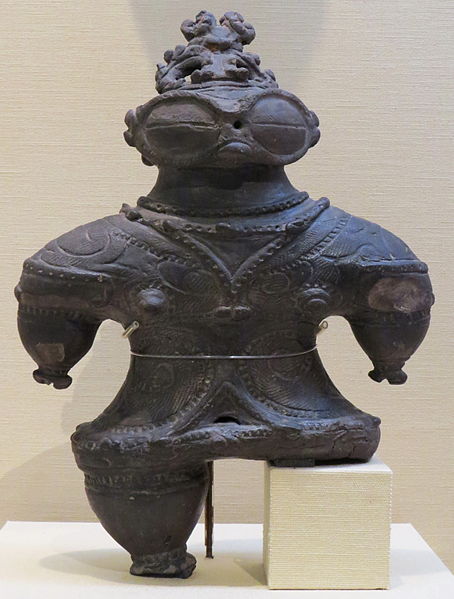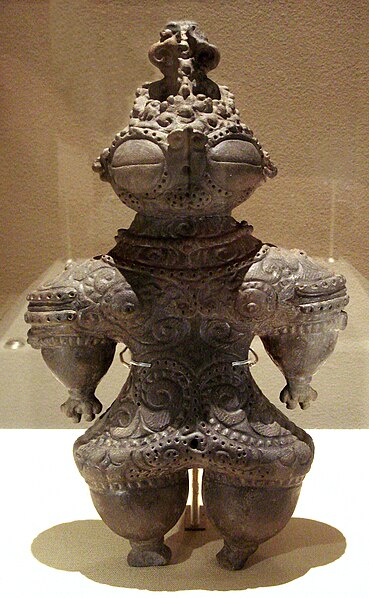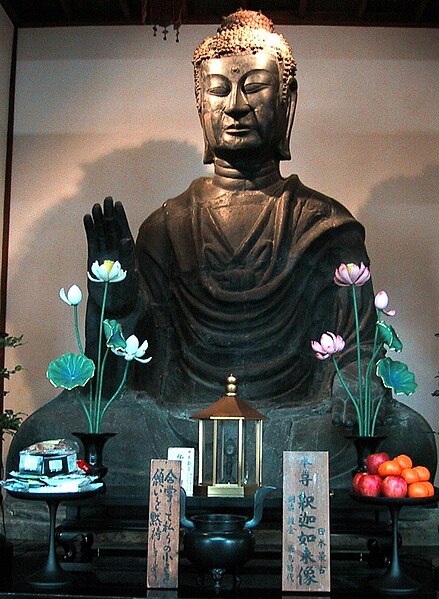Sculpture in Japan began with the clay figure. Towards the end of the long Neolithic Jōmon period, some pottery vessels were "flame-rimmed" with extensions to the rim that can only be called sculptural, and very stylized pottery dogū figures were produced, many with the characteristic "snow-goggle" eyes. During the Kofun period of the 3rd to 6th century CE, haniwa terracotta figures of humans and animals in a simplistic style were erected outside important tombs. The arrival of Buddhism in the 6th century brought with it sophisticated traditions in sculpture, Chinese styles mediated via Korea. The 7th-century Hōryū-ji and its contents have survived more intact than any East Asian Buddhist temple of its date, with works including a Shaka Trinity of 623 in bronze, showing the historical Buddha flanked by two bodhisattvas and also the Guardian Kings of the Four Directions.
Tamonten in Tōdai-ji, Wood, Edo period
Dogū, or statuette in the late Jōmon period
'Flame-style' vessel, Neolithic Jōmon period; c. 2750 BCE; earthenware with carved and applied decoration; height: 61 cm, diameter: 55.8 cm
Dogū with "snow-goggle" eyes, 1000–400 BCE
Tori Busshi was a Japanese sculptor active in the late 6th and early 7th century. He was from the Kuratsukuri clan, and his full title was Shiba no Kuratsukuri-be no Obito Tori Busshi (司馬鞍作部首止利仏師); Busshi is a title meaning "the maker of Buddhist images". By the early 7th century, Tori Busshi had become the favorite sculptor of Soga no Umako and Prince Shōtoku. Such high-ranking patrons indicate that Tori was highly esteemed as an artist and not just an anonymous craftsman. Many extant Asuka period sculptures in gilt bronze are credited to Tori and his workshop. The artist's work epitomizes Japanese sculpture during the era, with its solid, geometric figures in front-oriented, characteristic poses.
The Shaka image of Asukadera, sculpted by Tori Busshi in 606
Shaka Triad in Hōryūji, 623






